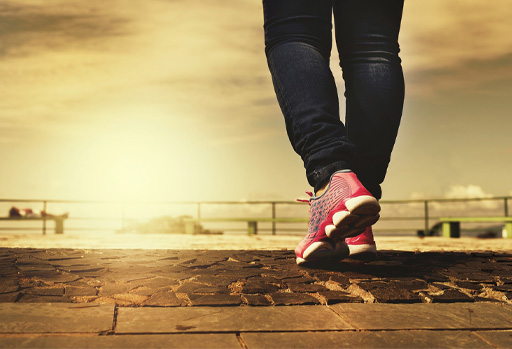4.3 Exercise
Research evidence shows that a greater sense of wellbeing relates to increased physical benefits, such as lower incidences of cardiovascular disease, stroke and sleeping problems (Warburton and Bredin, 2019). Physical activity does not always means running, swimming, going to the gym or attending exercise classes. As an educator, even just being physically active, for example walking to colleagues’ desks instead of emailing them, taking the stairs instead of a lift, taking regular breaks from screens to stretch and breathe, or walking outside in lunchbreaks, can all help to build and maintain physical and mental resilience.
The benefits of outdoor activities, and being in nature for more than 120–150 minutes a week, can be explored in the OpenLearn article ‘The benefits of outdoor green and blue spaces’ which shows why these are so important for your mental health.
Activity _unit9.5.3 Activity 9 Getting moving
In your reflective diary note down any physical activity taken today and this week, estimating the time spent on each activity, your level of enjoyment and the impact on your physical and mental health. Decide if your activity levels are sufficient or, if not, note down three ways in which you could build in more activity and/or access to green and blue spaces in your lifestyle and/or work environment.
Discussion
Through exercise you increase your fitness, and feelings of physical and mental health and wellbeing. You also increase your physical, as well as mental, resilience, improve your mood and boost your immune system (Nieman and Wentz, 2019). Have you been sitting for a while now? Why not get up, grab yourself a drink of water, take a few steps or perhaps go for a short walk?


